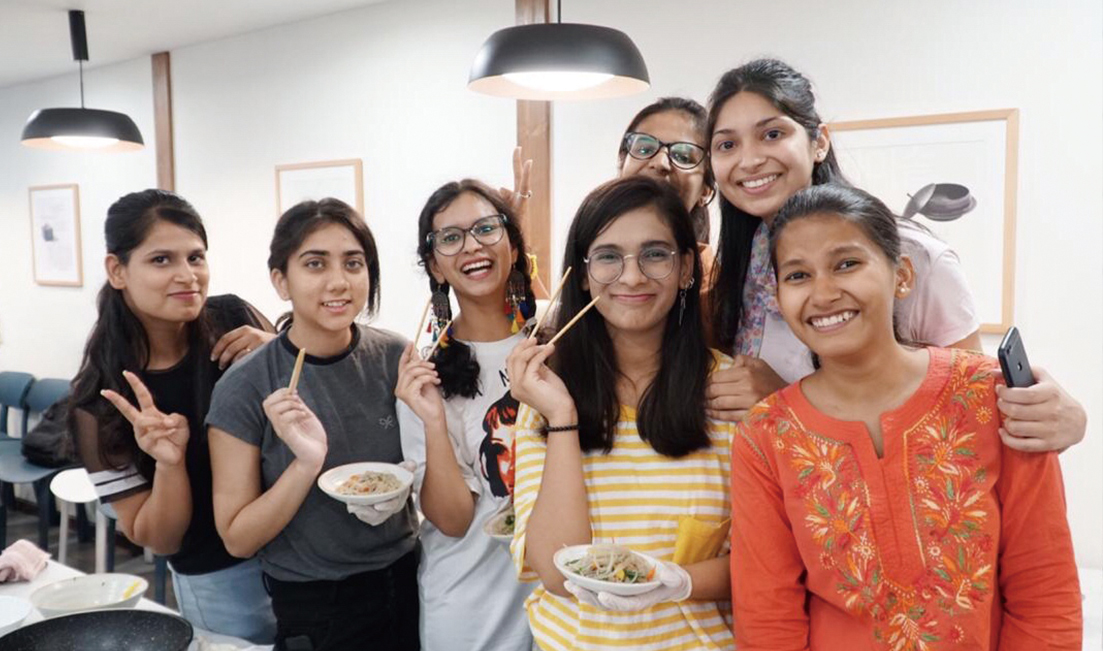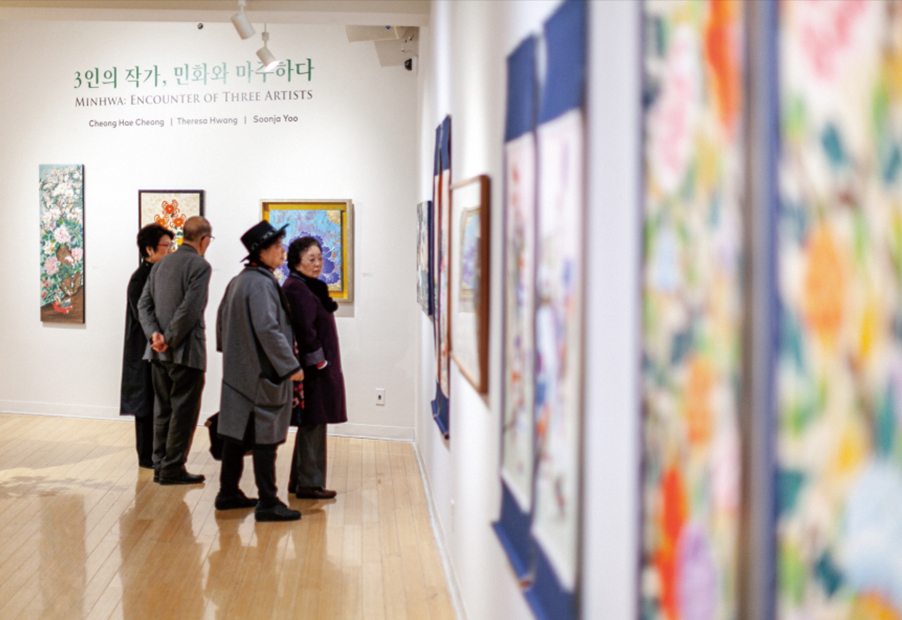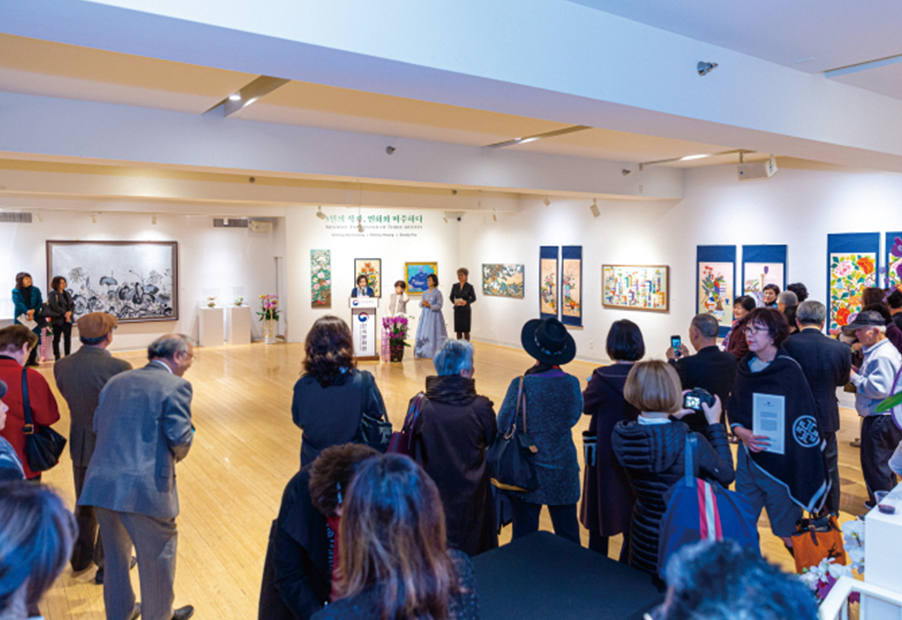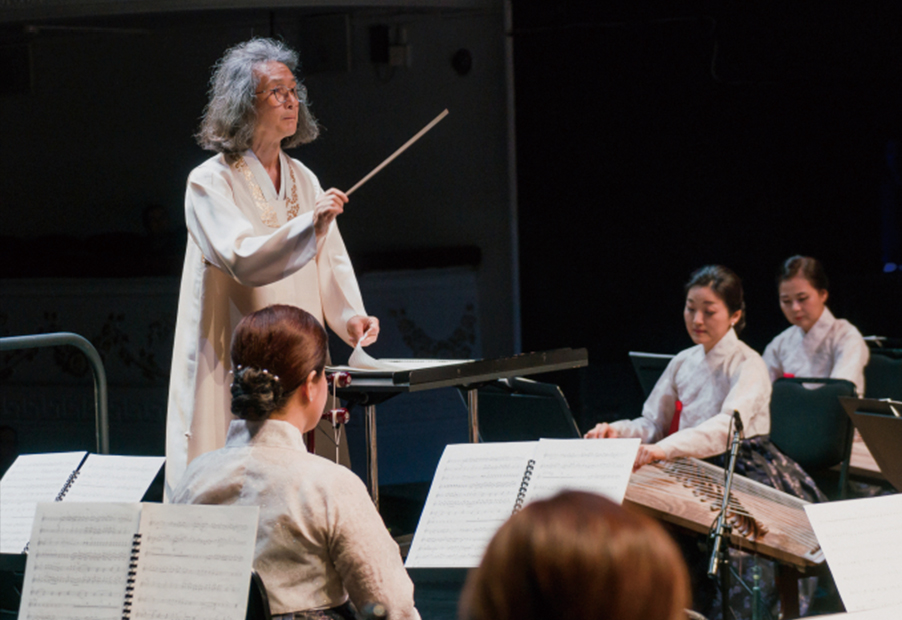Global Korea I
Modern Folk Painting Exhibit
 Los Angeles, U.S.
Los Angeles, U.S.
The KCC in Los Angeles ushered in 2020 with the LA Art Project. For the exhibition “Minhwa: Encounter of Three Artists,” three artists specializing in folk paintings — the L.A.-based Yu Sun-ja, egg craft artist Teresa Hwang and the Korea-based lacquer folk painter Jeong Jeong-hye — were invited to show the diverse trends of modern folk painting through traditional and modern works under the same theme.
Folk paintings were popular in the private sector from the late 18th to the early 20th century. The general perception is that modern folk paintings identically reenact old versions but fail to reflect the creator’s characteristics. Lately, however, nouveau folk paintings have emerged that faithfully inheriting techniques and traditions while reflecting the creator’s characteristics and the traits of the times.
By attracting stimulating artists and exhibitions from around the world, the KCC in the City of Angels promotes Korean culture and holds programs to share cultures with other communities.
Global Korea I
‘Dignity of Korean Sounds’
 Warsaw, Poland
Warsaw, Poland
To mark the 30th anniversary of diplomatic ties between Korea and Poland, the National Orchestra of Korea presented the concert “Dignity of Korean Sounds” at Dramatyczny Theater in the Polish capital of Warsaw.
Hosted by the Korean Ministry of Culture, Sports and Tourism and supervised by the Korean Foundation for International Cultural Exchange and the KCC in Warsaw, the performance featured the orchestra’s newly arranged pieces featuring traditional and creative Korean music and the folk songs of the two countries.
The orchestra’s performance of “When the Last Rose Withers,” a famous folk song by Polish composer Ignacy Jan Paderewski was especially well-received by the audience. In the reception that followed, many in the audience thanked the orchestra’s artistic director Kim Seong-jin, daegeum (large bamboo flute) soloist Kim Jeong-seung and singer Kim Ae-ran and posed for photos with them.
As the first of its kind in Poland by the orchestra, the concert received kudos from Polish composers and music experts for its high quality and unique content. The event also introduced the essence and diversity of Korean culture to Poles on the occasion of the 30th anniversary of diplomatic ties last year.
Global Korea II
How I Spent a Year Learning
Korean and Promoting Korea
Written by • Korea.net Honorary Reporter Arachika Kapoor from India Photo courtesy of • Arachika Kapoor
After discovering the Korean folk song “Arirang” by accident, I decided to dig deeper into Korean culture.
I don’t remember how and when I became a fan of Korean culture, but I find it remarkable how Korea has spread Hallyu (Korean Wave) across all continents. For that, I give kudos to the collective efforts of Korean Cultural Centers (KCCs), the Korea Tourism Organization (KTO), Korean embassies and other institutions that promote Korea around the world. My thanks also go out to people who wholeheartedly embrace different cultures, be it in the form of music, TV, art, history, technology or skincare.
With my interest in things Korean piqued, I started writing about Korean culture for magazines and websites. In January last year, I entered King Sejong Institute at the KCC in New Delhi, India, to study Korean. Studying at the institute is more than just learning the language. With the center hosting monthly exhibitions, cultural and food workshops, and other activities, students get ample opportunities to volunteer and learn more about Korean culture and mannerisms.
Months later, I was honored to be appointed an Honorary Reporter for Korea’s official government website, Korea.net. I started writing more about Korean culture and covering Korea-related events in India, and felt special about writing for a Korean website. In addition, my first webtoon (online comic) on the history of Korea’s economic development was published.
Soon afterwards, my teachers at Sejong offered me the opportunity to join the writing team for the first Korean-language textbook for Indian schools. The KCC-published book seeks to introduce the Korean language and culture to students through content like Hangeul, Korean phrases and grammar, and cultural aspects of Korea like Hanbok, Korean items on the UNESCO World Heritage list and Korean food.
Toward the end of the year, the KTO hosted the program “I Love Korea Supporters,” which promoted tourism in Korea and Korean culture via social media. At the end of this three-month program, the tourism body chose me to speak at the “Korea Supporters Meet” in New Delhi. Through monthly video chats, quizzes and volunteering, we learned so much about Korea during the program, and most importantly, we met Korean officials and diplomats as well as fellow Hallyu enthusiasts.
In the hope of further contributing to the spread of Hallyu, I started a blog (www.arakorearirang.com) in January this year. Because “Arirang” will always hold a special place in my heart since this folk song is how I discovered Korean culture, I named my blog as a wordplay using my initials and the word “Arirang.”























